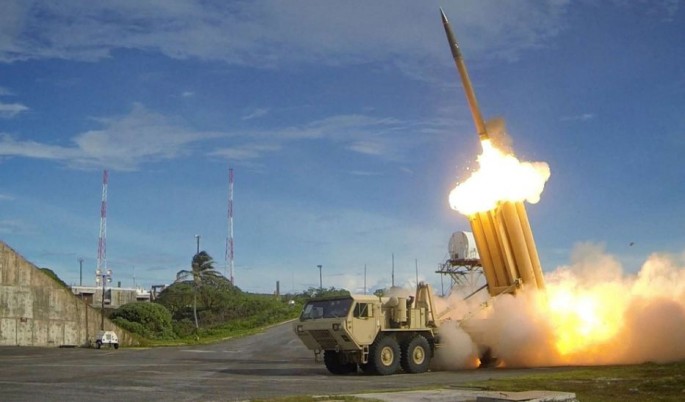South Korea's and the United States' obstinate insistence on emplacing the THAAD (Theater High Altitude Area Defense) anti-missile system at two sites in South Korea is worsening a "New Cold War" being waged against China, claims Chinese state-run media.
A commentary in the English-language and state-owned newspaper, China Daily, further argues THAAD has driven a wedge driven between China and South Korea that benefits the anti-China plans of the United States.
It also assails Japan for striving mightily to shift the strategic balance of power in East Asia in its favor while claiming it wants nothing more than to maintain the strategic status quo.
That status quo will be overturned by Japan's plans to emplace THAAD batteries on its territory by 2019 on the same excuse used by South Korea that the U.S.-made missile system is their only credible defense against North Korean ballistic missiles.
The commentary says the U.S., Japan and South Korea take the deployment of THAAD in Japan and South Korea as necessary, "but China and Russia see no reason for that."
It said during Russian President Vladimir Putin's visit to Beijing in June, "China and Russia issued a statement calling on nations to strictly abide by the norms of international law, keep their military capabilities at the minimum level required for national security and refrain from steps aimed at expanding existing military-political alliances."
This plea has not been heeded by the U.S., Japan and South Korea.
The statement also criticized the deployment of anti-missile systems in Europe and Asia, "saying those who deploy them often acted under false pretenses."
Japan last week announced it has taken the first steps in a process that will eventually lead to its deploying THAAD on Japanese soil.
Japan said it has set-up a commission to examine the potential benefits of emplacing THAAD to increase its defense capabilities against North Korean ballistic missiles. The commission headed by State Minister of Defense Kenji Wakamiya will examine the pros and cons of using THAAD.
"We are investigating future systems for intercepting missiles," said Japan's Defense Minister Tomomi Inada.
Although Japan has no concrete plans to deploy THAAD, the Japan Self-Defense Force is considering what can be done to better defend Japan from the threat posed by North Korea's ballistic missiles.
Japan is seriously considering a three-stage THAAD defense system. The first-stage consists of an anti-ballsitic missile defense system now in place is a two-tier system relying on ship-based RIM-161 Standard Missile 3 (SM-3) interceptors aboard its Atago-class and Kongo-class guided missile destroyers to target missiles in space.
The second-stage consists of land-based MIM-104F Patriot (PAC-3) surface-to-air missile batteries to intercept rockets flying close to the ground.
THAAD will allow the interception of missiles in or outside the Earth's atmosphere, thereby constituting a third-stage defense.



























